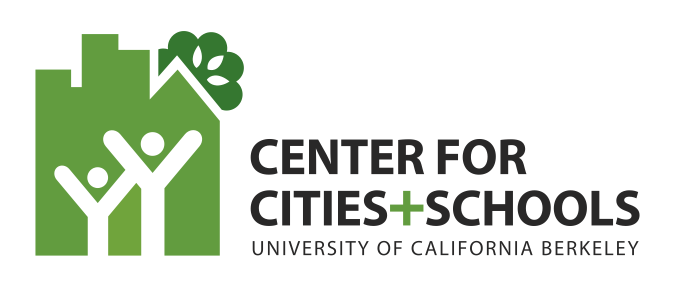By Art Stellar, Ph.D.
Many school districts have deteriorating school buildings. Most have unmet needs for major renovations and repairs. The reason these situations are left unaddressed is lack of funds. Regular operating budgets have little in preventive maintenance or repair accounts except for the gravest occurrences. Capital budgets pay off old bond issues or adhere to one significant issue at a time. States rarely provide funding for school buildings and then usually on a reimbursement basis. It can take two years to clearly articulate building needs and to generate sufficient local public support to pass a new bond referendum.
A good source of funds for school renovations is Qualified Zone Academy Bonds (QZAB). Yet, very few school administrators or officials know about QZAB. This includes school facility directors, business managers, bond attorneys, and school board members. This brief article provides an overview of QZAB and how QZAB can resolve lingering or anticipated school facility needs.
What is QZAB?
QZAB is a zero interest, 25-year loan program US Congress has authorized since 1998 at $400 million per year for K-12 public schools. Early in 2016 there was a billion dollars available in the United States for eligible schools. The US Treasury Department determines the allocation of these funds to each state based upon a formula related to total population and income levels. To see your state’s allocations, visit www.qzab.org
Interested schools apply to their state departments of education who make decisions to allocate no interest QZAB funds to schools within their state. Usually the process is “first come, first served”, although some states have other procedures. Charter schools are generally eligible, if they meet the criteria.
The states issue approval letters, which can be used by the receiving school districts to sell bonds at the amounts specified. The school districts pay no interest on these bonds and, except for a couple of states, do not have to go to a public vote to “cash in” on the approval letters.
The sale of the bonds produces the actual QZAB funds for the school district. These funds have to be spent within three years of the issuance of the approval letter, although there are a few exceptions for less than three years depending on when the approval was conveyed.
The Federal Government offers tax credits to the institutions or individuals who purchase the QZAB bonds. The amount of the tax credit varies according to the overall bond market, but is typically worth between 4 to 5% of the bond and good for 25 years as a reduction of Federal taxes owed. These credits can be rolled over to future years and/or sold; hence, there is an important economic benefit to the buyer of the bonds.
Schools that gain approval of the QZAB bonds experience a real advantage of QZAB in their ability to issue no interest bonds. While schools pay different rates for bonds depending upon a variety of factors, most school districts are paying close to 5% interest on current bonds. Over the course of 25 years, a five percent interest charge can double the amount the school district pays. (Think of your 30-year home mortgage in which you pay 5 times the cost of your home by the time the mortgage is paid.) Also, due to inflation, the bonds are paid off with money that is worth less each year than the previous year. No interest bonds such as QZAB are like having “free money” since only the principal is paid.
Eligibility
A school must have 35% or more students on free/reduced meals or the reasonable expectation that there will be 35% to be eligible for QZAB funds. The “QZ” stands for Qualified Zone, which can also be a federally defined enterprise zone; however, the simplest means of determining eligibility is to identify those schools that meet the 35% or more free and reduced student criteria.
Use of Funds
The proceeds of the QZAB bonds can be used for these categories: facilities renovation, energy efficiency, curriculum, teacher training, technology, equipment, renewable energy, and/or academy expenses. QZAB funds cannot be used for buying land or for building new buildings. QZAB funds, however, can be used to cover interior and exterior costs, once the shell of a new building is paid for with other funds.
QZAB funds can be utilized to replace/repair roofs, windows, parking lots, physical education facilities, lighting systems, furnaces, plumbing, electrical work, air conditioning, etc. Security systems can be added. Technology can be purchased. Solar panels, wind generators, or geothermal units are all legitimate expenses. (For a complete list, contact me at artstellar@yahoo.com and ask for a planning guide).
A few states have peculiar biases or restrictions regarding the use of QZAB funds for certain kinds of technology, school buses, or what can be purchased for the academy. Contact someone with expertise and practical QZAB experience to confirm specific qualifications for the federal and state governments.
Required Federal Mandates (2 main requirements)
Some school districts do not pursue QZAB funds because they do not know how to meet the requirements. A vendor, who may attempt to sell a district bonds without mentioning requirements or deemphasizing them, has misinformed some districts. A few districts ignore or forget about federal mandates. State department personnel may overlook them due to being unaware or lack of attention to detail. There are federal legal requirements, however, which can get a district in trouble with the IRS when that agency audits a district’s spent QZAB funds.
It is not difficult to comply with the mandates, especially if a district uses a QZAB experienced nonprofit like the nonprofit National Education Foundation.
1) 10% Match Donation from a business or nonprofit of the total QZAB requested/approved. There are a variety of ways to meet this requirement, but the district has to document that the match is real and worthy of meeting at least ten percent of the total QZAB amount approved. The easiest method is to have a cash donation(s) or a donation from an organization that has already completed the research, like the nonprofit National Education Foundation, to justify to the IRS the value of the match donation.
2) Develop a NEW QZAB Academy for students designed and/or implemented in cooperation with the designated match partner to “better prepare students for college and workforce.” The “A” in QZAB stands for Academy which makes it hard to understand how some QZAB applications omit this key component or others involved in the process fail to notice when there is no academy. The IRS will hold the district responsible for this mandate.
The academy has to be NEW and not something the district has already been doing. An existing educational program will not be considered an academy just because it has been labeled an academy.
The term academy was not definitively defined when Congress originally approved QZAB. There does have to be an academy plan in place for any school site where QZAB funds are to be spent. The overall academy plan must be consistent with local, state, and Federal standards and curriculum. More states are including statements in their QZAB applications that make the academy a concrete educational program. A QZAB academy must be an observable and reasonable learning venture that meets the mission embedded in the QZAB legislation. Without an academy at a school site, QZAB funds cannot be spent there.
If a district is interested, it would be beneficial to research and make official inquiries as to the regulations as QZAB is often a funding source that is overlooked. Please visit the QZAB website to learn more. www.qzab.org
Summary
The QZAB or Qualified Zone Academy Bond program is a source hidden or unknown by most school officials. Fortunately, it is not as complex as it first may appear. QZAB is an excellent source of funds to address needed building renovations. At the same time a savvy school district can apply QZAB funds—matching and/or the bond proceeds directly—to establish a productive educational academy to raise student achievement. The key is to either intensively study QZAB or collaborate with a knowledgeable and experienced partner.
Dr. Art Stellar is Vice-President of the nonprofit National Education Foundation where he has assisted school administrators across the country in acquiring QZAB approval for over $120 million with at least that much currently in the pipeline. He served as a widely recognized superintendent for 25 years, as well as working for Renaissance Learning and leading the High/Scope Educational Research Foundation as president/CEO. He has served as president of ASCD, The Horace Mann League, and the North American Chapter of the World Council of Curriculum and Instruction; vice-president of the New York state PTA; and Chairman of the Board of Directors for the National Dropout Prevention Network and Center.












